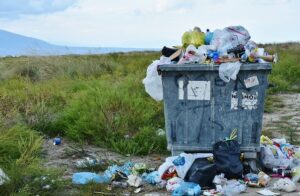
This post will introduce the concept of Human-Environment Interaction, what it is, how it relates to the themes of Geography, what some examples are, and more.
Table of Contents
- What is Human-Environment Interaction?
- Human and Environment Interactions
- Human-Environment Interaction Examples
- Positive Human Environment Interaction Examples
- Ways You Can Help the Human Environment Interaction
- Human Environment Interaction in Specific Countries
- Final Thoughts
What is Human-Environment Interaction?
What is Human-Environment Interaction? In Human-Environment Interaction, humans interact with the environment on a daily basis. The environment changes the lives of humans and at the same time, humans change the environment through their way of living.
Human-Environment Interaction in Geography
Human-Environment Interaction is one of the 5 themes of Geography.
The relationship between the human social system and the natural world is at the core of human geography. The connection and exchange between them is called human-environmental interaction. This deals mainly with sustainability, pollution, and environmental issues.
You can learn more about Human-Environment Interaction in Geography at Human-Environment Interaction in Geography.
Human-Environment Interaction Definition
The definition of Human-Environment Interaction is the way humans interact with their surroundings or ecosystem.
It’s the way they interact with the earth and its environment and make changes to that environment. At the same time, the environment can have an impact on humans. The environment can change what we eat, wear, build or do in everyday life. So, the environment impacts us and we impact the environment.
Human-Environment Interaction in a sentence, is the way that humans interact with and modify their environment.
Another definition might be, how humans adapt to their environment.
Human and Environment Interactions
We’ll take a look at people and environment interaction at a closer level next.
Types of Human-Environment Interaction
These are the three types of human-environment interaction.
- Humans depend on the environment
- Humans adapt to the environment
- Humans modify and change the environment
To learn more about these in-depth, visit Ways Humans Interact with the Environment.
Human-Environment Interaction Examples
Here are some examples of human-environment interactions. These are human activities that have some kind of effect on the environment.
You can find the full list of examples at Human Environment Interaction Examples. For just the negative examples see Negative Human Environment Interaction Examples or for only the positive examples, visit Positive Human Environment Interaction Examples
The Use of Natural Resources
Humans use natural resources for everyday life. Humans need food and water from the environment in order to survive. Natural resources such as wood, metal, oil, diamonds, gold, and other resources are also used for human survival and advancement. Wood might be needed to build fires and cook food for example.
The problem is that humans can overuse resources, and some of those are non-renewable such as fossil fuels. Also, the use of resources such as oil leads to pollution and climate change.
The mining of some minerals might destroy millions of acres of land in the extraction process and cause the leaking of toxins into areas nearby. All of these are big negative impacts on the environment and the sustainability of the earth for future generations as well as having negative effects on the health of nearby people who are exposed to these practices.
The Building and Expansion of Cities and Roads
The building of homes, cities, and businesses sometimes requires cutting down trees and altering the land and environment. This also creates spaces where animals and plants can no longer live.
This is especially true in bigger urban cities such as New York City where so much has been covered with cement, and barely any natural green space exists anymore. This is not only destructive to the environment and animals, but it also can take a mental toll. It’s been found that green spaces and water can have a positive impact on mental health.
Roads also run through natural habitats and can alter the environment and scare away or hurt animals. Also, the exhaust caused by cars traveling on these roads has a huge negative impact on the environment. Flying as well, in airplanes as a means of transportation, produces a lot of emissions.
Pollution

Cars and factories all create air pollution, water pollution, and toxic chemicals that are harmful to our health, the environment and the ozone layer. One of the biggest causes for concern is carbon emissions.
Transportation contributes to a third of greenhouse emissions and is responsible for killing around 800,000 people per year.
See Human Environment Interaction in Mexico and Mexico City for these Human-Environment Interaction examples.
Deforestation
The earth’s forests are being cut down at alarming rates. This is usually for buildings and industrial equipment, or the raising of livestock for animal food or products. This is one reason it helps to eat a Whole Food Plant-Based Diet which lowers the demand for animal foods and minimizes the use of land for raising livestock.
This deforestation leads to the extinction of certain species of animals. Also, trees are useful in keeping the air clean and improving the health of the environment. The fewer trees left, the less they are able to improve the climate.
Deforestation also contributes to soil erosion. When trees are chopped down, the soil below is exposed and easily washed away by the rain.
Drilling for Oil
Drilling for oil releases methane gases which contribute to climate change. Also, oil spills can happen and are massively disruptive to the environment, killing animals and wildlife.
Using up Water Resources
Accessible and clean water is running out and being used up. This clean water is also unevenly distributed throughout the planet.
Litter and Trash

Waste from trash, litter, and plastics can get into oceans and natural environments and harm animals.
Boats
The increased use of boats on the water can have a negative impact on ocean life.
Illegal Hunting and Poaching
Illegal hunting and poaching, especially excessively and for sport, can contribute to the extinction of certain breeds of animals.
Positive Human Environment Interaction Examples
What is a positive human-environment interaction? Do any exist?
Well, it’s hard for humans to have a positive impact on the environment, that is, making it better than it was before. But there are some practices that minimize the negative effects or neutralize any effects.
You can find the full post on this at Positive Human Environment Interaction Examples.
Some of these examples are:
Renewable Energy Sources
By using renewable energy sources such as solar power and wind, we don’t need to use unrenewable and environmentally damaging energy sources such as oil and fossil fuels.
Recycling
Recycling can help to prevent waste from the trash in the environment, as well as minimize the need for more resources such as plastics.
Building National Parks
Preserving areas of nature is a great practice for the environment. Unfortunately, this is not practiced as much in underdeveloped countries for the time being.
Building Green Spaces
Some cities work to build new green spaces which are areas of trees or nature for residents to enjoy.
Water Management and Reuse
Managing water usage can play a part in helping to conserve water sources. Also, the use of rainwater harvesters can help as well.
You can find more info at Positive Human Environment Interaction Examples – 8 Ways to Help
Ways You Can Help the Human Environment Interaction
Here are some ways you can have a more positive man environment interaction.
Eating Little or No Meat and Animal Foods
By going either vegan, vegetarian, or plant-based and eating little or no meat, you can help support the environment. Many practices such as factory farming and raising livestock for animal foods contribute to the deterioration of the environment.
Practicing Minimalism
Minimalism is the idea of living within your means and creating as little waste as possible. This could mean living in a smaller house or space, using less electricity, having less food waste, etc.
Walking, Riding a Bike, Taking the Bus, Carpooling
By walking, riding a bike, taking the bus, or carpooling whenever you travel, you can minimize pollution. Also, you can decrease the demand for gas.
Invest in Energy-Efficient Cars and Renewable Energy
If you do need a car, it’s best to invest in a more energy-efficient car that has fewer emissions and uses less gas. The Toyota Prius or an electric car is an example.
Also, you might look into renewable energy for your home such as solar power if it is offered where you live.
Human Environment Interaction in Specific Countries
Human Environment Interaction in Mexico
Final Thoughts
We have looked at a definition of Human-Environment Interaction in Geography and many examples. Humans are constantly interacting with and influencing the environment and the environment also affects humans. There are 3 ways in which humans and the environment interact.
Human-Environment Interaction is 1 of the 5 themes in Geography. There were many examples presented including positive human-environment interaction examples.
The environment is a fragile place and humans must remember to respect and give back to the environment and not abuse it, as it is needed for our own lives.
Video Resources
Human Environment Interaction Video
Human-Environment Interaction definition
Lance has been passionate about the plant-based diet and we have been following a whole food plant-based diet for over 5 years. We focus on health, natural healing, weight management, animal rights, and the health of the planet and environment by focusing on whole plant-based foods and sustainable practices.
Learn more at the About Me page and follow on social media at the links below.


